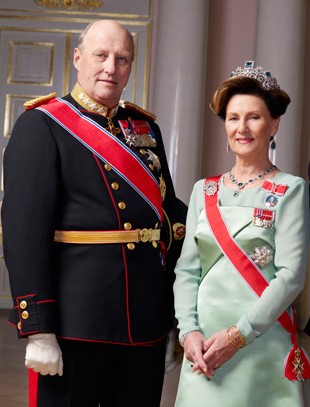| A Brief History of Norway
Norway is one of the most peaceful countries on earth, but it hasn’t always been that way, starting with the great geological shifts and ice ages that formed some of the most majestic scenery on the planet earth. The landscape of the fjords was carved during the ice age, a long-term decrease in the temperature of the Earth’s surface and atmosphere, resulting in an expansion of continental ice sheets, polar ice sheets and alpine glaciers. (Continued on the next page)
As the great glaciers of the last Ice Age retreated about 10,000 years ago, living things moved northward, especially along the seacoast. The earliest Norwegians probably arrived from Central Asia to fish and hunt in the area now called Finnmark, in the far northern part of Norway, east of Tromsø, where they probably evolved into the Sami people. A few thousand years later, people moved north from Germany into central and southern Norway and became the people we call Norwegians. They all originally depended on fishing and hunting, and by 1,500 BC, farming, too.
Norwegians first enter the world stage during the Viking Age, when they put together their sailing skills, their supply of iron for weapons, their need for new land and their spirit of adventure and gave their name to this era of European history. From the writings of Snorri Sturlson, preserved in Viking settlements in Iceland, we know that the first king of Norway was Harald Hårfager (Fairhair) who became ruler of a united Norway in the 870’s.
The Vikings believed in many gods, especially Odin and Thor, but eventually the Vikings who settled in Christian countries converted and brought Christianity back to Norway. King Olaf I was the first Christian king, and built the first church around 995. It was his son Olaf II who succeeded in converting his country, and who is remembered as St. Olaf.
As the Viking Age ended, Norway experienced a cultural awakening where money was spent to build churches and cathedrals, and the creation of a wealthy upper class. Foreign trade grew first with Britain and then with Germany. Bergen emerged as a center for trade with German merchant cities who had combined into an organization called the Hanseatic League, trading German corn for Norwegian fish. German merchants grew more and more powerful, threatening to cut off the supply of corn if they did not get their way. In the end, Norwegians needed corn more than Germans needed fish.
In the late 14th century, the Black Plague radically altered Norway, killing between 50 – 70% of the population, across all walks of life, from peasants and laborers to wealthy merchants. As the country struggled to recover, through marriages between Danish and Norwegian royalty, a union was formed between Denmark, Norway and Sweden in 1397.
For the next 400+ years, Norway entered a time known as the 400-year Night, as all of the kingdom’s royal, intellectual and administrative power and nearly all of Norway’s wealth was centered in Copenhagen, Denmark until 1814. After the Napoleonic Wars the union with Denmark was dissolved in 1814, and for a short time Norway again became an independent nation, and was even drawing up its own constitution. However Norway was forced into a union with Sweden – in a way as an independent nation, but with a common king and joint foreign policy. This was a hard time for Norwegians. In 1825, a group of Norwegian Quakers emigrated to America to escape religious persecution. In the coming decades 750,000 Norwegians emigrated to North America looking for more productive farmland and better opportunities.
Throughout Europe a spirit of nationalism emerged during the 19th century, and Norway was no exception, particularly in the arts. Violin virtuoso Ole Bull was inspired by this nationalism, and in addition to encouraging the talent of young Edvard Grieg, he co-founded Det Norske Theater in Bergen, the first theater where actors spoke Norwegian rather than Danish. In addition to Grieg, the work of playwright Henrik Ibsen and painter Edvard Munch presented the world with an insight into Norway. In 1905 the union of Norway and Sweden was dissolved, and the Norwegian people chose its own monarch: King Haakon VII.

During the 20th century, Norway sought to stay out of the two World Wars with a foreign policy of neutrality. Though Norway declared itself neutral at the outbreak of World War II, Germany invaded, and the country was occupied for the duration of the war.
The years following World War II were lean years, and there was a debate if the country would become part of the Soviet Union. In the 1960s, oil was discovered in the North Sea, transforming Norway from one of the poorest nations in Europe to one of the richest. |


Leave a Comment